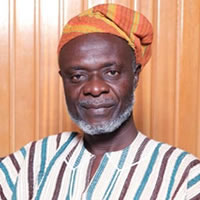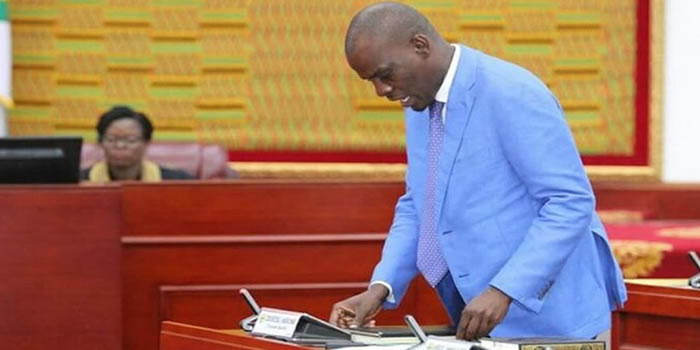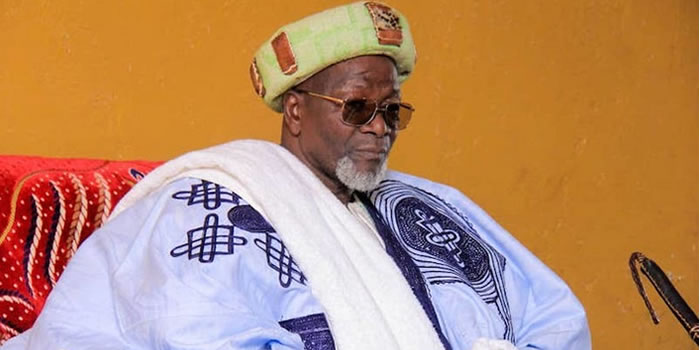
Introduction
This chapter looks at the population size of the Northern region and its distribution across the 20 districts by locality (rural/urban) and sex. In addition, the chapter discusses population trends and density, the age-sex structure, nationality, ethnicity and religion.
Population Size and Growth
As shown in Table 3.1, the Northern region has a total population of 2,479,461 in 2010 with more females (1,249,574) than males (1,229,887). The population of the region increased by 36.2 percent between 2000 and 2010, making it the fastest growing region in the country after the Central (38.1 %) and Greater Accra (38.0 %) regions.
In 1960, the population of the Northern region was 531,573, increased to 727,618 in 1970 and to 1,164,583 in 1984 representing over 50 percent increase in 24 years. The region recorded an intercensal growth rate of 2.9 percent between 2000 and 2010.
This is a slight increase over the 2.8 percent of the period 1984 to 2000. Prior to 2000, the annual intercensal growth rate of the region has been above 3 percent (3.2 percent between 1960 and 1970 and 3.4 percent between 1970 and 1984). The region?s share of the national population is 10.1 percent, making it the fourth largest in terms of population after the Ashanti (19.4%), Greater Accra (16.3%) and Eastern (10.7%) regions.
Population Distribution
Distribution of the Northern region population by district is shown in Table 3.2. The Tamale Metropolitan Assembly is the most populous district in the region, with a population of 371, 351, representing 15 percent of the region?s population. This large concentration may be due to the fact that Tamale is the capital of the region and is also centrally located.
Commercial activities, job opportunities, as well as educational institutions in the metropolis are attracting people from other parts of the region. The Yendi Municipality is second largest in terms of population (199,592).
The least populous districts are Chereponi (53,394) and Saboba (65,706) representing 2.2 percent and 2.7 percent of the region?s population respectively. The two districts use to be one and known as Saboba/Chereponi District until 2004 when they were split into two.
Population Density, 1960-2010
The Northern region is Ghana?s largest in terms of land area (70,384 square kilometres), constituting about 30 percent of the country?s land mass. As a result, population density (number of persons per square kilometre) of the region is the lowest in the country, at 35 in 2010 (Table 3.3), having increased from 26 in 2000. Population density of the region in previous censuses was 8 in 1960, 10 in 1970 and 17 in 1984.
In addition to the large land mass, migration of the youth from the Northern region to southern Ghana in search of greener pastures is another possible reason for the low population density. The current situation where young girls, mainly from the Northern region, migrate to southern Ghana as kayayei (porters) continues to deprive the region of able-bodied persons.
The situation may improve if the Savannah Accelerated Development Authority (SADA) is effectively implemented. This would lead to the creation of more jobs to attract the youth in the region to stay, and may even attract people from neighbouring regions
.
Locality of Residence of the Population (rural/urban)
The Northern region has a predominantly rural population (69.7%) as indicated in Table 3.4. Tolon Kumbungu (92.5%), Saboba (90.6%) and Kpandai (90.0%) have very high rural populations. With the exception of Tamale Metropolis (73.0%), Savelugu/Nanton (39.7%), West Gonja (32.7%) and East Mamprusi (32.4%) districts, the remaining districts have less than 30.0 percent of their populations living in urban areas.
Age-Sex Structure
Accurate information on age-sex structure is very important for effective planning and decision making. Data disaggregated by age and sex are crucial not only for demographic analysis of morbidity, mortality and fertility, but also for planning for various developmental areas. Any discussion of a country?s educational needs, labour force participation and migration, for example, will not be complete without information on age of the population.
Age Structure
From the 2010 Population and Housing Census data, the Northern region has a youthful population with 44.9% of the population aged less than 15 years (Table 3.5). The age structure of the region has not change much in terms of its youthful nature. The population less than 15 years old was 46.2 percent in 2000 and has only fallen marginally to its present level of 44.9 percent.
The population aged 65 years and older constitutes 4.4 percent of the population. Persons aged 15-64 years constitute 51.0 percent of the Northern region population. Additionally, the proportion of the population aged less than 20 years constitutes more than half (55.4%) of the region?s total population.
This should be a worrying situation since most of the people in this age bracket are supposed to be in school and be cared for. The government, therefore, has the huge responsibility of providing educational and recreational facilities such as school infrastructure as required by the Free Compulsory Universal Basic Education (FCUBE) policy.
A population with a high proportion of infants and children places another great responsibility on the government in terms of the provision of health care facilities and drugs for childhood killer diseases such measles, polio and whooping cough. The Chereponi District, for example, has one-fifth of its population less than five years old.
The population aged 65 years and older constitutes 4.4 percent of the region?s population as compared to 4.8 percent in 2000. Thus, the population of the aged in the Northern region is decreasing, contrary to the rising trend in the country as a whole.
Population Pyramid
Figure 3.1 shows that the region?s population structure is broad at the base and narrows upwards. The region?s population is therefore more youthful in nature and has the potential of increasing the productive work force with time. However, it also implies greater provision of social amenities such as schools, health facilities, and recreational centres to cater for the youthful population. With proper planning and prudent use of available resources, the youthful nature of the population should be considered as a blessing rather than a constraint.
Age Dependency Ratio
Table 3.6 presents the dependency situation in the region. The dependency ratio is expressed as a percentage of the dependent population (persons aged less than 15 years and those above 64 years) relative to the working population (i.e. the population aged 15-64 years) is 96.8. This means that approximately every working person in the Northern region takes care of one other person.
The child dependency ratio (i.e., the population less than 15 years relative to the working population aged 15-64) in the region is 88.2, while the old age dependency ratio (i.e., the ratio of persons 65 and over to persons 15 to 64) is 8.7. The implication is that the working population is taking care of more
children than of the aged.
Kpandai, Nanumba South, Nanumba North, Saboba, Chereponi, Bunkpurugu-Yunyoo, East Mamprusi and West Mamprusi have dependency ratios above 100.0. This implies that there are more dependents than those in the working population. On the other hand, Tamale Metropolis has the lowest dependency ratio, 70.1. This may be due to the fact that Tamale is the capital of the region, with possibly many migrant workers and students, many of them within the non-dependent population group.
However, it needs to be noted that the age dependency ratio is a measure of age composition and not of economic dependency. This is so because, by using age only for the construction of dependency ratios, we tend to ignore the fact that there are many economically independent older persons, as well as economically dependent unemployed adults.
Nevertheless, with changes in the balance of the numbers of persons in the broad age groups, public policy issues arise with regard to the need for distinct types of social services, housing and consumer services. Dependency ratios are, therefore, useful as crude indicators of potential levels of economic, physical and social support needed by persons in these broad age groups.
Sex Structure
Sex ratio measures the number of males in relation to every 100 females. Table 3.7 shows that the region?s sex ratio is 98.4, meaning the female population for the region is slightly higher than that of males. Bole, East Gonja, Kpandai, Nanumba South and Tamale districts have sex ratios more than 100.
The relatively high sex ratios for these districts could be due to migration and given that more males migrate than females, there is the likelihood of Tamale Metropolis having more males than females.
Bole, East Gonja, Kpandai and Nanumba South districts have relatively fertile land for farming and could the reason for those districts having more males than females. The remaining districts have sex ratios less than 100, meaning there are more females than males. In the case of Bole District, the surface mining activity is likely to attract a lot of young men rather than females.
Nationality
Table 3.8 shows that 93.9 percent of the population of the Northern region is Ghanaians by birth, with relatively low proportions being of dual nationality (2.5%), Ghanaians by naturalization (0.9%) and non-Ghanaians (2.8%). West Gonja has the highest proportion (7.8%) of non-Ghanaians and Tolon-Kumbungu (1.7%) has the lowest proportion of Non-Ghanaians living in the region.
Birthplace
A person?s birthplace is defined as the locality of usual residence of the mother at the time of birth. Table 3.10 shows the distribution of the population by place of birth and by district. On the average, 86.1 percent of the population of the region currently resides in the district in which they were born.
About 8.9 percent were born in other districts within the region, while the remaining 5.0 percent were born outside the region. Among them, 1.0 percent was born outside Ghana. There is some variation in the proportion of those currently residing in their districts of birth ranging from 67.3 percent in Sawla-Tuna-Kalba district to 94.4 percent in Chereponi District.
The proportion of those born in other districts of the region also varies from 3.4 percent in West Mamprusi to 16.9 percent in the Savelugu Nanton district. The proportion born outside the region also varies from 3.7 percent in West Mamprusi to 23.4 percent in the Bole district.
The data show that there has been substantial movement of people from their original place of birth. Savelugu Nanton (16.9%), Tamale South (14.9%) and Gonja Central (14.9%) have significant numbers of their residents born in other parts of the region. Reasons of work or transfers from one location to another may account for this movement. Furthermore, 14.8 percent of the population of Bole was born in the Upper West Region. Intra-regional marriages as well as work or transfers from one locality to another and also the search for jobs could account for this phenomenon.
Additionally, the analysis of the trend of data on place of birth indicates that the Northern region has a more static population (low in-migration and low out-migration rates). Settlers in the two districts in the region that have high in-migration rates hail almost exclusively from the Upper East and Upper West regions
For instance, Saboba District has 2.3 percent of its population born outside the country. The reason could be that because it shares a boundary on the east with Togo, this has facilitated cross-border marriages and other movements. Thus, women who hail from Togo but are married in Saboba, could move to Togo to stay with their parents when they are about to deliver their children.
In such a situation, these children are not born in Saboba District, for that matter in Ghana, but outside the country. It is also most likely that some people from Saboba could temporarily move to settle in Togo in search of greener pastures.
During their sojourn, they could give birth to some of their children there. With regard to Bole District, it shares a boundary with the Upper West Region and that explains why 14.8 percent of its population happens to be born in that region due to intra-regional marriages. It is also a district that has a substantial immigrant population because of the surface mining activity taking place in the Kui community. That accounts for why those born within the district constitute 67.3 percent.
Date Created : 11/28/2017 2:52:42 AM












 facebook
facebook
 twitter
twitter
 Youtube
Youtube
 +233 593 831 280
+233 593 831 280 0800 430 430
0800 430 430 GPS: GE-231-4383
GPS: GE-231-4383 info@ghanadistricts.com
info@ghanadistricts.com Box GP1044, Accra, Ghana
Box GP1044, Accra, Ghana